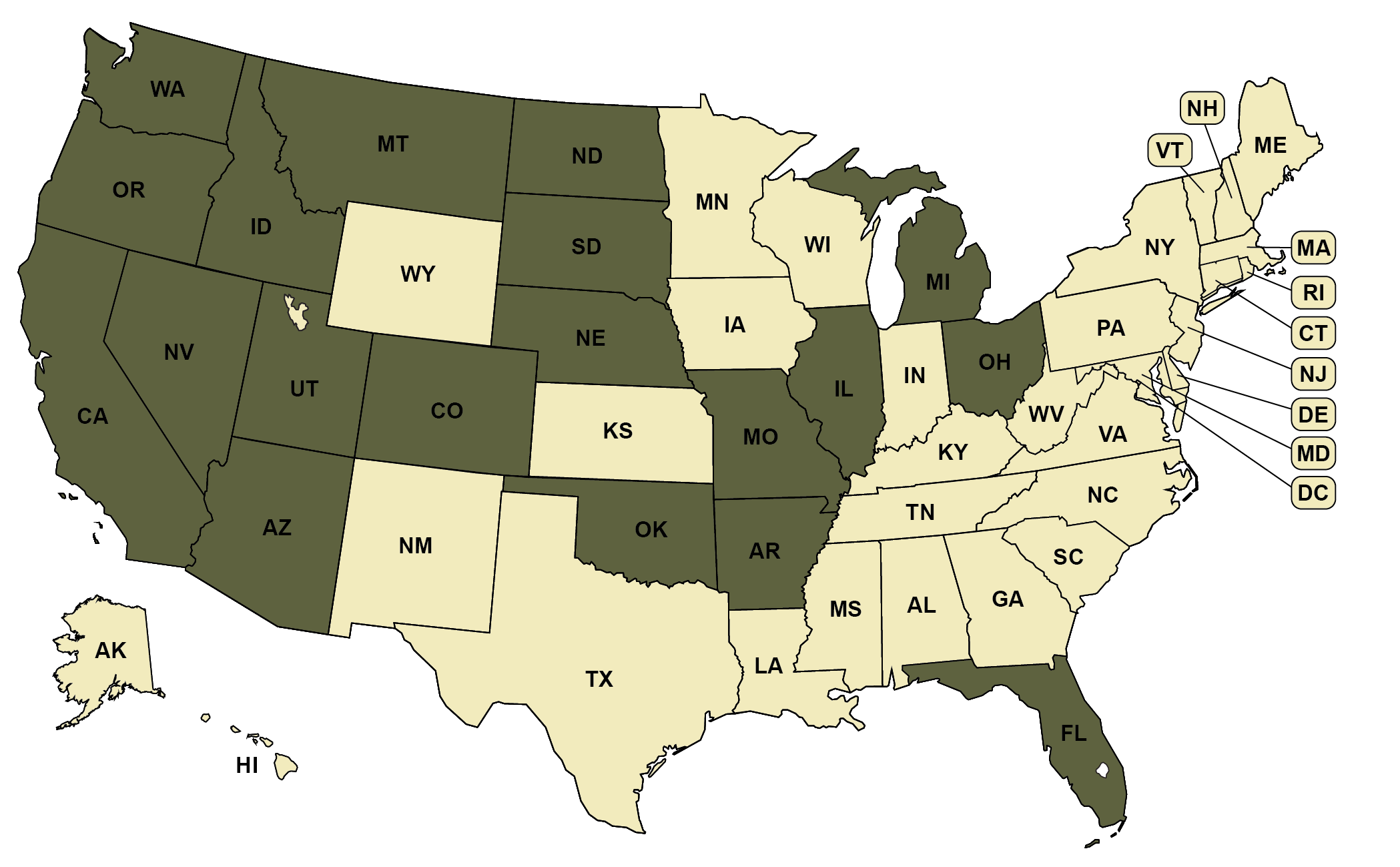The initiative process is a tool through which citizens can propose statutes or constitutional amendments to be put on the ballot in their state. Often referred to generally as ballot measures, the initiative process can be direct or indirect depending on the state. Direct citizen initiatives are put onto the ballot without involvement from the state legislature if they meet certain qualifications, usually related to signature gathering and subject matter, as well as various deadlines. Indirect citizen initiatives are submitted to the state legislature, which can then approve the measure without it going to the ballot, not adopt the measure, or even submit a competing measure. This map tracks states that have direct citizen initiative processes.
-
State has a direct citizen initiative process
(19 states)
-
State does not have a direct citizen initiative process
(31 states + D.C.)
Recommended citation: Movement Advancement Project. "Direct Citizen Initiative States." https://www.mapresearch.org/democracy-maps/direct_citizen_initiative_states. Accessed [day of access]
Breakdown by Population
*Note: These percentages reflect the voting-eligible population, as reported by the United States Election Project.
37 % of the population lives in states that have a direct citizen initiative process
63 % of the population lives in states that do not have a direct citizen initiative process


